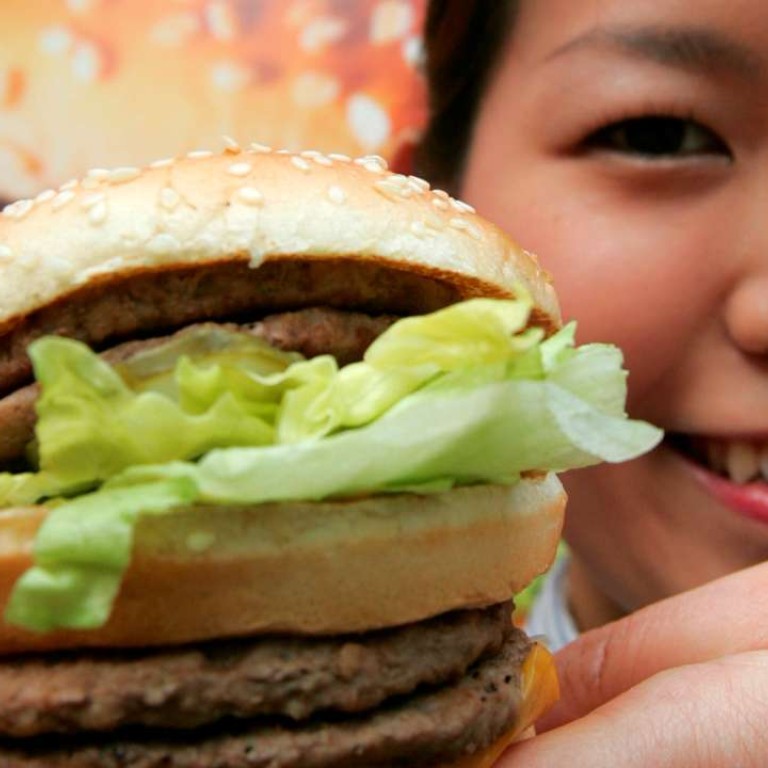
Here’s what the Big Mac really shows us about corporate culture
‘It is the story of hubris in large organisations where there is much chatter about listening.... while the reality is that only the people at the top get a real hearing’
Whether or not you have eaten one of the world’s most popular fast food offerings you will almost certainly know of the Big Mac burger. It was a name with resonance even in Hong Kong before the McDonald’s franchise was launched here, as Murray MacLehose, the Governor who initiated the Sino-British talks on the transfer of sovereignty, was somewhat affectionately known as Big Mac.
Far less well known was the Big Mac’s inventor, Michael James “Jim” Delligatti, who died recently at the age of 96. He ran one of McDonald’s more successful franchises in Uniontown, near Pittsburg and came up with the idea by the simple expedient of listening to his customers who told him they were looking for a bigger burger.

That’s not bad by any standard but what the McDonald Corporation is less keen to talk about is that when Delligatti came up with the idea it was more or less dismissed out of hand. After all he was a mere lowly franchisee from one of those rust belt towns and it was a well known fact that all the best ideas came from McDonald’s mercurial big boss, Ray Kroc.
Following the success of the Big Mac, McDonald’s publicity machine denied the company had been lukewarm over introducing the bigger burger but no one at HQ was magnanimous enough to pay Delligatti a single cent for his innovation.
I consider myself to be something of a student of the McDonald’s business and have followed it over many years; knowing how things work over at the Golden Arches I am far more inclined to believe the Delligatti version of events than anything that comes out of the mouths of the master franchise holder.
This is not to belittle Kroc’s extraordinary achievement or dogged hard work as he set out to transform a company founded by the McDonald brothers. They made a pretty decent hamburger but failed to see the business’s potential. Kroc knew better although he was neither a cook nor a food specialist but he was a brilliant opportunist.
He quickly worked out that the fastest and most profitable way of expanding McDonald’s was to turn it into a franchised operation which allowed rapid expansion and gave the parent company a steady income.
Kroc was neither a pioneer of the franchise system (that honour goes to the Singer Sewing Machine Company) nor was he a pioneer of the fast food business, Dunkin’ Donuts, for example, was well established in this field. However he was a fantastic salesman but above all an operational genius. He devised a 75-page manual specifying exactly what was expected of franchisees and others involved in the business, including the famous prescription for the standard beef patty to weigh 1.6 ounces, be 3.875 inches in diameter and to have a fat content below 19 per cent.

Franchisees had more or less no scope for innovation and were subject and are subject to ferocious inspection by the parent company. Despite this lack of flexibility many people wanted to become franchisees because they were keen to own a business but lacked a novel idea for that business or indeed the know-how to make it work.
Some McDonalds franchisees make a pretty good living out of their franchise stores but many are scrapping by to pay the company before there is anything left for themselves and this applies to the entire universe of the franchise business where people work off their socks to make their outlets flourish but occupy that strange hinterland that straddles employees and genuinely independent business people.
Delligatti’s story is all the more intriguing because he added so much value to the McDonald business and it is poignant in that he never reaped the full benefit of his work. It is also the story of hubris in large organisations where there is much chatter about listening to the customers and cherishing the ideas of employees, while the reality is that only the people at the top get a real hearing.
It is however to McDonald’s credit that Delligatti eventually got a hearing, but only after defying the franchise system and selling his creation in his own outlets with considerable success.
He also made a singular contribution to turnover by eating at least one Big Mac per week. Maybe the 540 calories they contain are not quite as bad for you as critics suggest. He, after all, lived for 10 decades.

